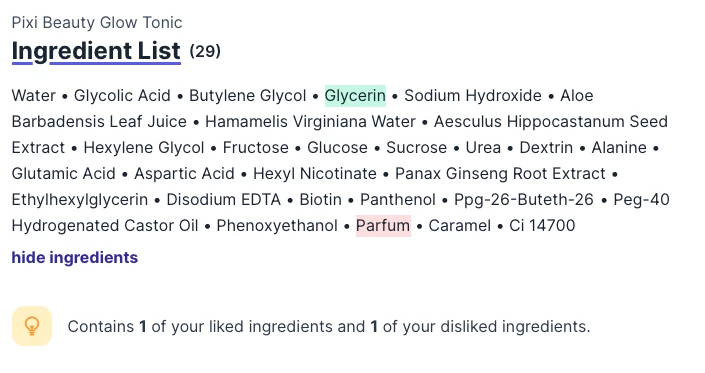Fragrance is one of those terms that either evokes joy or fear. Both reactions are justifiable depending on your skin type and allergies. We're here to tell you not all scenting ingredients are equal! So what exactly is fragrance?
In products, fragrances have two purposes:
1) to give a nice scent
2) cover up an unpleasant scent
Some non-fragrance ingredients may naturally give off an unpleasant scent. Masking fragrances are used to cover these unpleasant scents.
This article will cover everything you need to know about fragrance or parfum in skincare:
- Types of fragrances
- Essential oils
- Fragrance/Parfum regulation
- Fragrance free or unscented?
- Identifying fragrance
- Should you avoid fragrance?
Types of fragrances
Fragrances come in two overarching categories: synthetic or natural. Synthetic fragrances are created in a lab or can be a semi-synthetic blend.
Semi-synthetic means it is a mix of synthetic-chemicals and natural fragrances. Natural fragrances come from a source existing in nature. These include such as plants, fruits, and flowers.
While synthetic gets a bad rep, how “bad” it is depends on the ingredient itself. Synthetic fragrances are more sustainable to produce and have a longer shelf life. They have the same properties as non-synthetic fragrance.
Whether a fragrance will cause allergies or sensitivity depends on the ingredient itself, whether they are natural or synthetic.
Essential Oils
What about essential oils?
Most essential oils are considered synthetic due to how they are created. Small amounts of plant extract are combined with chemicals or a carrier oil to create essential oil. This blend can be a mix of any number of plant extracts or chemicals. Learn all about about oils in skincare here.
Like other types of fragrances, essential oils are not all equal. Some essential oils do have skin benefits. However, most essential oils have been shown to cause skin irritation, dryness, redness, and itchiness. More research is needed to find whether the benefits outweigh the concerns for essential oils.
If you are a fan of essential oil, it is best to find products with small amounts.
Regulations
Seeing the terms ‘fragrance’ or ‘parfum’ on an ingredients list is not by accident. According to the FDA and the EU Commission, these terms represent a mix of fragrances.
In the US, this is to help with “trade-secret” protection. For example, your favorite perfume probably has fragrance/parfum near the top of the list. This ingredient, a mix of many ingredients, gives that perfume its unique scent.
Long story short: brands are not required to list out every fragrance ingredient. In the EU, only known allergen ingredients are required to be listed. And that's if they have an amount higher than 0.001%.
Fragrance-Free vs Unscented
If you are trying to avoid fragrance, be sure to avoid "unscented" products. Unscented means a masking ingredient was used to cover up the scent.
Fragrance-free products do not use any ingredients that bave a fragrance. Many products labeled as 'fragrance-free' still contain fragrances such as essential oils. It is best to look at the full ingredients list to identify if a product is truly fragrance-free.
Fragrance Alternative Names
If you want to identify fragrance in your skincare, look out for these alternative names:
- Perfume
- Parfum
- Essential oil blend
- Aroma
Common Perfuming Ingredients
Some ingredients give off a scent and considered a fragrance. The most common ones include:
Common Masking Ingredients
Masking ingredients are used to cover unpleasant scents from other ingredients. Some common masking ingredients include:
Should I avoid fragrance?
Many fragrances are not considered harmful or known to sensitize skin. Some of our favorite moisturizers have a light and pleasant scent.
The rule of thumb is to avoid fragrances if you have sensitive skin or are prone to inflammation. If you are trying to avoid fragrance, it is best to look at the entire ingredients list. Sometimes a product labeled 'fragrance-free' isn't truly fragrance-free!
Ingredient Checker
You can use the ingredient checker to parse out specific fragrances you may or may not like. When you create an account, you can even set your liked/disliked ingredients. This will help you quickly see if a product has these ingredients or not.

We recommend speaking with a professional if you have concerns about fragrances in your cosmetics. A professional will be able to give you the best advice according to your skin. 😊
Further Learning
Here is everything you need to know about an ingredients list.